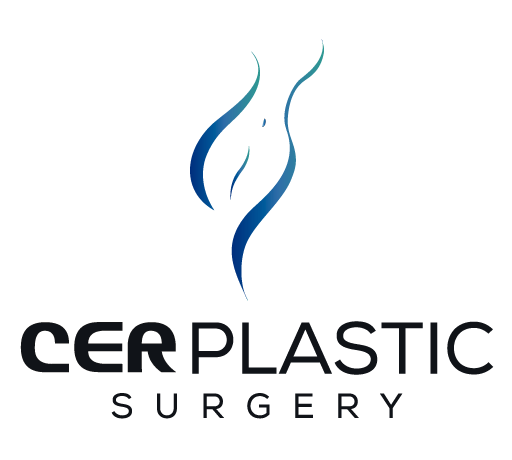Facelift Scars
When it comes to regaining a youthful appearance, Facelift surgery is a popular choice. However, concerns about scarring often hold individuals back from taking the plunge. In this guide, we’ll explore everything you need to know about facelift scars, including incision placement, scarring behind the ears, and how to avoid noticeable scars. Plus, we’ll delve into the possibility of scar revision and how patients can actively improve the healing process.
Facelift Scarring and Incision Placement
Facelift scarring and incision placement are pivotal aspects of the facelift procedure. A skilled surgeon meticulously plans incision locations to ensure minimal scarring and natural-looking results. Typically, incisions are discreetly made along the hairline, behind the ears, and sometimes under the chin.
Incision placement varies depending on the specific Facelift technique used, such as the traditional facelift, mini facelift, or neck lift. The goal is to access and reposition facial tissues while keeping scars inconspicuous.
Modern surgical techniques, like endoscopic Facelifts, offer even more minimal scarring possibilities. These techniques utilize tiny incisions and specialized tools to lift and tighten facial muscles.
Ultimately, successful Facelift scarring depends on the surgeon’s expertise and your post-operative care. Following your surgeon’s instructions for wound care and scar management is crucial to achieving the best possible outcome. With proper planning and care, you can enjoy the rejuvenating benefits of a facelift with discreet and well-hidden scars.

Facelift Scars Behind Ears
Facelift scars behind the ears are a common concern for individuals considering this cosmetic procedure. These scars typically result from the incisions made during surgery to lift and tighten the facial skin. The area behind the ears is where the scars tend to be most noticeable, as it’s closer to the surface and often subjected to more movement.
However, it’s essential to note that skilled plastic surgeons take great care to minimize scarring in this area. Modern techniques, such as precise incision placement and advanced suturing, aim to create inconspicuous scars. Additionally, scar management strategies post-surgery can further improve their appearance.
Many individuals find that, with time, these scars become less noticeable and can be easily concealed with hairstyles or makeup. If you’re concerned about facelift scars behind the ears, consulting with an experienced surgeon who can discuss incision techniques and scar management options specific to your case is crucial.
Avoiding Facelift Scarring
Minimizing facelift scarring is a common concern for those considering facial rejuvenation surgery. While some scarring is unavoidable, there are effective strategies to ensure it remains inconspicuous:
- Choose an Experienced Surgeon: Select a board-certified plastic surgeon with a proven track record in facelift procedures. Their expertise can make a significant difference in scar placement and minimization.
- Optimal Incision Placement: A skilled surgeon knows how to place incisions discreetly, often within the hairline or natural facial creases, to conceal scars.
- Careful Aftercare: Follow post-operative instructions diligently. Keep the incision sites clean, moisturized, and protected from the sun to aid healing.
- Scar Management: Consider scar-minimizing products like silicone gel sheets or creams, which can help scars fade over time.
- Healthy Lifestyle: Maintain a balanced diet, stay hydrated, avoid smoking, and limit alcohol consumption to promote optimal healing.
- Regular Follow-ups: Attend follow-up appointments with your surgeon for monitoring and guidance on scar care.
By taking these proactive measures, you can significantly reduce the visibility of facelift scars and enjoy the rejuvenating benefits of the procedure with confidence.
No Facelift Scars & Facelift Scar Revision
Achieving a facelift without visible scars is a coveted goal for many people seeking facial rejuvenation. Although total carelessness is not always possible, modern medicine offers extraordinary solutions to minimize and correct facelift scars.
- No facelift scars: State-of-the-art techniques, such as endoscopic facelifts and minimal incision approaches, aim to significantly reduce visible scars. These methods involve smaller incisions and advanced technology, resulting in scars that are well hidden and fade over time.
- Facelift scar revision: If you are dissatisfied with your existing facelift scars, scar revision procedures can offer you a second chance at a flawless result. Expert surgeons employ a variety of techniques, such as laser therapy and meticulous incision adjustments, to improve the appearance of scars.
With the right surgeon and appropriate aftercare, you can embark on your facelift journey with confidence, knowing that today’s advances offer the possibility of minimal scarring and the case of scar revision for flawless results.
What Can Patients Do to Improve Scars?
Patients play a vital role in the scar improvement process. While surgical techniques and post-operative care by healthcare professionals are crucial, there are proactive steps individuals can take to enhance scar healing.
- Proper Wound Care: Following your surgeon’s wound care instructions is paramount. Keep the incision area clean, apply recommended ointments, and change dressings as advised.
- Protect from Sun Exposure: Shielding scars from harmful UV rays is vital. Sun exposure can cause scars to darken or become more noticeable. Use sunscreen or protective clothing when outdoors.
- Massage Therapy: Gentle massaging of healed scars can improve blood flow, softening the tissue and reducing tightness.
- Silicone-Based Products: Silicone gel sheets or creams have been shown to minimize scar appearance by keeping the area hydrated and protected.
- Stay Hydrated and Eat Nutritiously: A well-balanced diet rich in nutrients and hydration can aid tissue repair.
- Avoid Smoking: Smoking hinders the body’s ability to heal. Quitting or refraining from smoking is beneficial.
- Scar Revision Treatments: Consult with a plastic surgeon regarding scar revision options if necessary.
By actively participating in your scar care journey, you can significantly improve the appearance of scars, contributing to a smoother, more confident you.
START A VIRTUAL CONSULTATION
A virtual consultation is when you send us photos of the places of your body where you’d like to improve. Then our surgeon analyzes it to confirm that you are a candidate for that particular procedure. We later inform you about our doctor’s decision and give you a quote with all the information about your surgery. Please, do be at ease that everything is confidential between yourself, the doctor, and the doctor’s representative.




